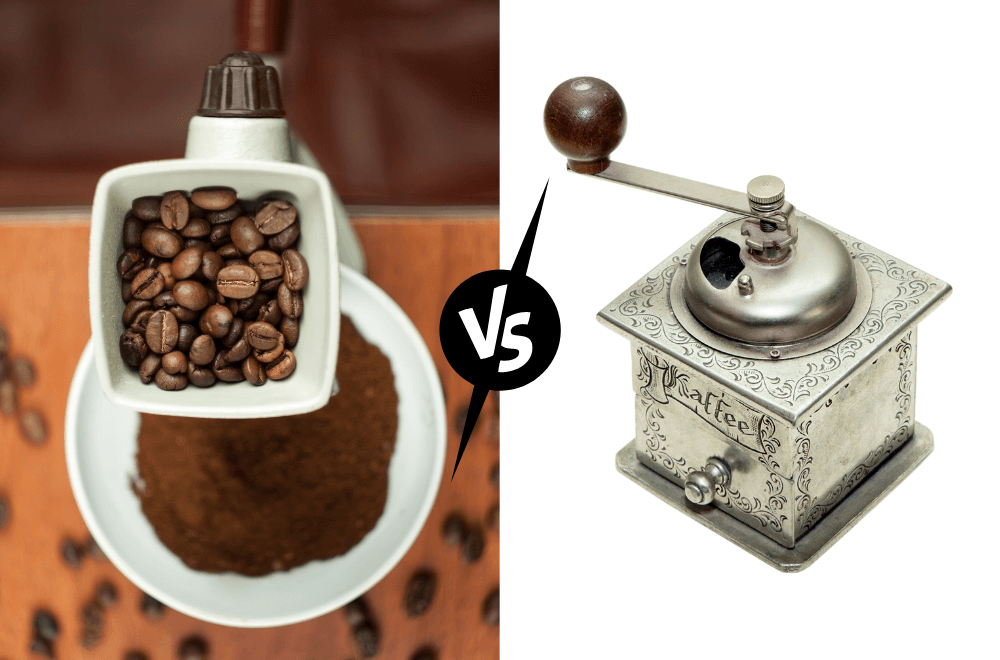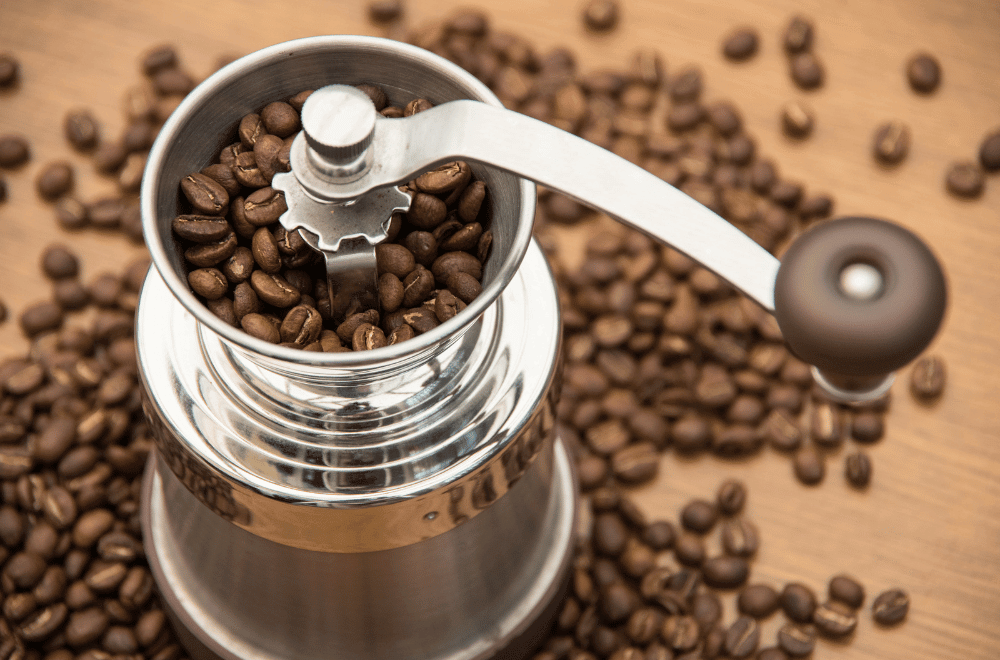Are you struggling to pick a coffee grinder? Discover what makes a difference between a coffee grinder ceramic vs. steel and which one is better for your needs.

Once I decided to start grinding and brewing my own coffee, my world changed for the better. My coffee was tastier and more refined. I could actually tell the difference between different beans and roasts, at least much more than I could before.
When I was comparing different coffee grinders, though, I noticed one unique feature – some of them were made from steel while others were made from ceramic. At first, I wasn’t sure it mattered, but there are some tangible pros and cons to each option. So, let’s break down the comparisons between a coffee grinder ceramic vs. steel.
- What Are Ceramic And Steel Coffee Grinders?
- What Do Ceramic And Steel Coffee Grinders Have In Common?
- Coffee Grinder Ceramic Vs. Steel: The Differences
- What's Better About Ceramic Grinders?
- What's Better About Steel Grinders?
- Who Should Get A Ceramic Grinder (And Why)?
- Who Should Get A Steel Grinder (And Why)?
What Are Ceramic And Steel Coffee Grinders?
As the title suggests, a ceramic coffee grinder is one that uses a ceramic blade instead of a metal one. Typically, manual grinders use ceramic blades since they last longer and maintain their sharpness better than steel. However, ceramic is both tough and fragile, which is why most electric grinders use metal burrs or blades instead.
Ceramic burr grinders can either be conical or flat, although the former is the most common. They work by drawing the beans into the chamber and crushing them between two ceramic pieces. Burr grinders are much more consistent than electric ones because the coffee grounds have to be a specific size when they fall through.
A steel grinder is one that uses steel components instead of ceramic. Steel grinders can use either a double-sided blade and work similarly to a blender, or they can be a burr grinder. Because metal is durable and affordable, steel grinders are pretty common in both manual and electric models.
What Do Ceramic And Steel Coffee Grinders Have In Common?

If you’re comparing a manual burr coffee grinder with ceramic or steel blades, both models will yield similar results. Both grinders can deliver consistent coffee grounds, and they’re durable enough to last for years. The shape and design of these grinders are also pretty identical, making them almost interchangeable.
Coffee Grinder Ceramic Vs. Steel: The Differences
| Ceramic | Steel |
| Affordable with little price variation | Price ranges from cheap to expensive |
| Will hold its edge longer | It will get dull after repeated use |
| Fragile | Sturdy |
| Usually only available as a burr grinder |
Burr and blade grinders are available |
| Mostly manual | Manual and electric options |
| Low maintenance and easy to clean | Must clean after each use to avoid rust |
What’s Better About Ceramic Grinders?
Ceramic grinders are built to last a lifetime and won’t lose their edge, even with repeated use. Also, these grinders are relatively cheap, even if you find an electric version. Overall, the price range for steel grinders is pretty broad, while ceramic grinders have little variation between prices.
While stainless steel can last forever if you treat it right, it does get dull and damaged after repeated use. By comparison, ceramic grinders will hold their edge virtually forever. So, as long as you don’t grind extra-large or extra-hard beans, your ceramic grinder should last a lifetime.
Steel can rust if you don’t take care of it, but not ceramic. Since steel can rust, you have to be careful about cleaning your grinder after each use. Ceramics don’t have that problem, so it’s not so vital to clean it thoroughly every time.
That said, because ceramic is brittle, you may have to worry about tiny pieces getting caught in the machine and causing parts to wear down or break.
What’s Better About Steel Grinders?
Steel grinders offer more flexibility and convenience. You can find blade and burr grinders, as well as manual versions if you’re trying to save money. Steel grinders can also be massive, high-end machines that can grind pounds of beans at once.
There is another area where steel grinders are better – if you accidentally drop them. Ceramic is brittle, so a sudden drop means you could crack the burrs. This isn’t guaranteed, but more likely than if you dropped a steel model instead.
Who Should Get A Ceramic Grinder (And Why)?
If you don’t mind grinding your beans manually, a ceramic grinder is an excellent choice because it will last forever and is easier to maintain. Even electric ceramic grinders should outlast their steel counterparts.
Ceramic grinders almost always use a burr to grind beans. Burr grinders are beloved because they produce more consistent grounds ideal for espresso. Meanwhile, steel grinders can use blades or burrs, and they range in size and specifications.
Who Should Get A Steel Grinder (And Why)?

A steel grinder is the better option if you’re looking for something fast, convenient, and easy to use. Because you have so many variations to choose from, you’re sure to find the best grinder for your unique needs. Learn more in our coffee grinder burr vs. blade and coffee grinder electric vs. manual guides.
